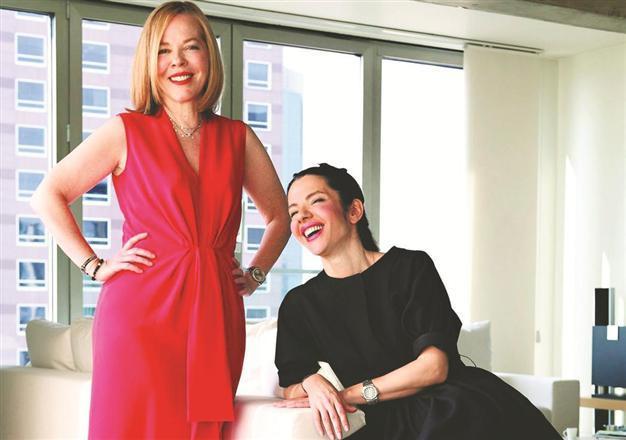Turkish fashion label wins Islamic art prize
LONDON - Reuters

Turkish fashion brand Dice Kayek, founded by the sisters Ayşe Ege (L) and Ece Ege, won the Jameel prize at London’s Victoria and Albert Museum.
The Turkish fashion label Dice Kayek on Dec. 10 won the Jameel prize at London’s Victoria and Albert Museum, which honors contemporary art inspired by Islamic tradition.
The 25,000-pound ($41,100) international prize, which is awarded every two years, has Iraqi-British architect Zaha Hadid as patron, and this year’s judges included Thomas Heatherwick, designer of the London Olympic Cauldron.
Dice Kayek, a company begun by two sisters in 1992, took inspiration from the robes of Ottoman rulers and mosques to create the prize-winning structured dresses of lam brocade and cotton.
Among the 10 finalists was Faig Ahmed from Azerbaijan, who has reimagined the oriental carpet by melding traditional patterns with dizzying computer-generated designs.
“I’m actually using the same technology as they (carpet-makers) have used for hundreds of years. But I’m using a computer to make the sketch,” Ahmed said.
The seemingly traditional design of one of his carpets melts into pixels, while another appears to collapse into itself in one corner. “When you change a design, it’s like the links between the past and future,” said Ahmed, whose works can take up to four months to create. “It’s making a little earthquake in the mind.”
Across the gallery, Pakistani-born artist Waqas Kahn’s large drawing also tricks the eye: what seem to be hundreds of undulating narrow lines turn out to be thousands of tiny dots, painstakingly drawn by hand.
Dancing retinas Working at night and applying ink between breaths, Kahn has developed from his training in miniature painting to become the only artist who creates such work on a large scale. He sees ink as a more fluid and expressive medium than paint. “The retinas should be dancing with it,” he said.
Other works are more political: Laurent Mareschal’s patterned floor made out of spices represents the fragility of many Palestinian lives.
Florie Salnot’s delicate jewelry made from bottles began as a project for refugees from Western Sahara.
V&A’s Jameel Gallery of Islamic Art opened, and more than 150 years after the museum began collecting art from the Middle East.
With artworks consisting of everything from dresses to videos and concrete, the range of media on show is as diverse as the artists’ backgrounds, with nominees coming from France, Lebanon and India, among other places.
The free exhibition runs at the Victoria and Albert museum until April 21, 2014.
